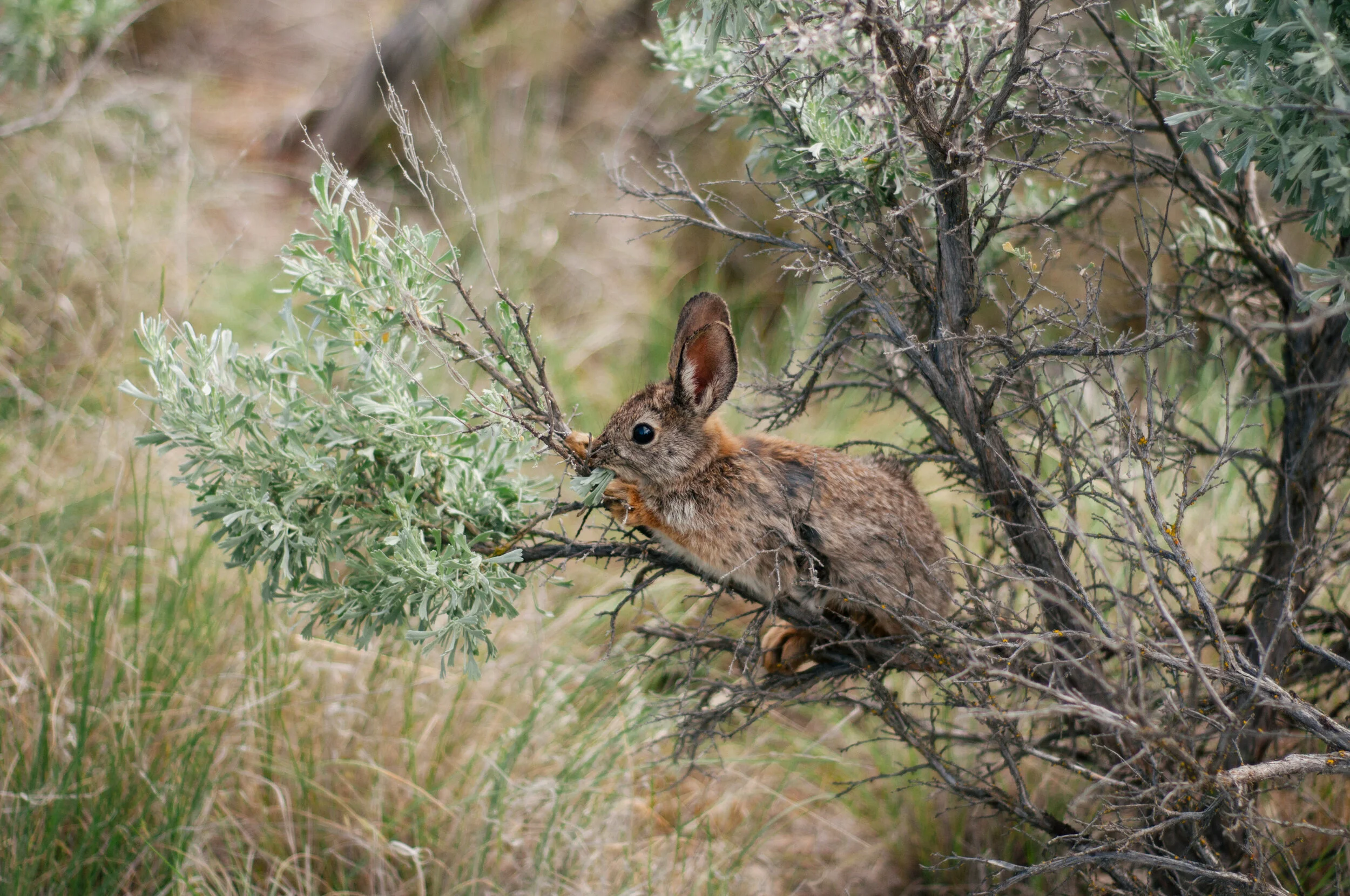By Emily Crabill, Americorps Stewardship Assistant with TNC
TNC’s Moses Coulee Field Station is a special place. I’ve known this to be true from my first visit out here last fall. Since beginning my AmeriCorps service in the spring, this fact has proved to be true over and over again. One reason: the bats!
On a cool spring evening in April after sunset, I sat out on the patio. As my eyes adjusted to the darkness, I watched the sky and noticed a change in the dynamic movement of flight patterns. By day, violet-green swallows swoosh and dive in long waves—but by dusk, the bats come on to the scene, darting around you at a speed so quick, you could easily miss them. The attitude of the sky changed and left me feeling inspired and curious.
Using my smartphone, I plugged in a little detector accessory. When paired with the corresponding app, it records the bat echolocations and provides an automatic bat ID. I sat outside trying to catch a glimpse of the furry, flying creatures and ended up detecting five species: silver-haired bat, California myotis, Western small-footed myotis, long-legged myotis and Yuma myotis. There were moments I wondered if they would crash right into me, but they’re truly masters of echolocation. Listen to a Western small-footed myotis in the recording below:
By the end of this evening’s exploration, I found a new level of excitement as I looked forward to helping with a summer bat-monitoring project. This is part of a larger effort called the North American Bat Monitoring Project, or NABat. In the Pacific Northwest, it’s led by Northwestern Bat Hub at Oregon State University Cascades. This is a huge collaboration between many agencies, including federal and state agencies, nonprofits, tribes, and the Bat Hub’s own team of field technicians.
Why monitor bats?
It’s all about conservation. Bat populations are facing two major threats across North America:
I. White-nose Syndrome
Currently, the No. 1 threat is white-nose syndrome, an exotic fungus that grows at cold temperatures. In winter, when bats go into hibernation, the fungus grows in bat’s wings, nose and ear tissues, eventually spreading to deep tissues. The fungus causes the bats to wake frequently through hibernation, interrupting their sleep and wasting the bat’s important fat reserves. As a result, it causes death by way of starvation and dehydration.
The fungus is mainly spread from bat to bat, but human-caused transmission (such as carrying the fungus on a person’s shoes) is also a concern, especially with an increase in outdoor recreational activities within bat habitat.
The first case of white-nose syndrome in North America was observed in 2007 in upstate New York. Since then, it has caused a huge decline to bat populations. It has infected multiple species including the long-legged bat and the Yuma myotis, but it has taken the biggest toll on the little brown bat. In 2011, the U.S. Fish and Wildlife Service estimated more than 6 million bat deaths were due to white-nose syndrome, but this number mostly looked at the Eastern Seaboard. It was not detected in the Pacific Northwest until recently.
II. Wind Turbines
The second major threat to bat populations is wind energy. More than 600,000 bats died at wind turbines in 2012 alone, shared Roger Rodriguez from the Bat Hub.
Unlike birds, there is currently no federal protection for bats, which is why ongoing monitoring efforts are important. The goal of the NABat project is to monitor these populations and increase our ability to make informed decisions to conserve bat populations as they relate to these threats. Groups, like Bat Conservation International, are looking at novel solutions to prevent collisions, such as acoustic deterrents to keep bats away from the turbine’s blades.
How do we monitor bats?
We have done bat monitoring at our McCartney Creek Preserve for the last three years. In the first year, we detected 11 bat species inhabiting the preserve. The following year, we detected two new species: the Townsend’s big-eared bat and the spotted bat — a total of 13 species!
Northwestern Bat Hub has an established grid cell system covering North America. Each cell is 10 kilometers x 10 kilometers. Within this grid system, we select sample cells (the green cubes in the map below), with the objective to detect as many bat species as possible within each sample cell. We have four sample sites at the McCartney Creek Preserve, each varying in its type of habitat: a clifftop, a cliff bottom, a meadow neighboring a creek and the opening of a narrow cave-like rock feature.
Each night of monitoring, we hiked to the site a couple hours before sunset. We put on our field-technician hats and followed the protocol, attaching the detector microphone to a 10-foot pole, securing it to a post, ensuring the detector’s settings are all correct and finally scheduling the recording to begin at sunset. Most bat species produce sounds at a frequency outside our human ability to hear, so we use an ultrasonic recording detector.
Additionally, site information was collected when dispatching the detectors. We made notes about the direction the microphone is pointed and listed any features of the landscape that could impact the detection, such as a cliff wall, trees, infrastructure or a water source. The next morning, we retrieved all the detectors and shipped our full SD cards to the Bat Hub for them to work their analytical magic. With the help of Lane Justus, my fellow AmeriCorps member, and Corinna Hanson, our Moses Coulee land manager, we successfully completed the 2020 bat monitoring. We look forward to sharing our results when they arrive!
If you are interested in learning more, I highly recommend giving this podcast episode a listen: When Mammals Fly.
































